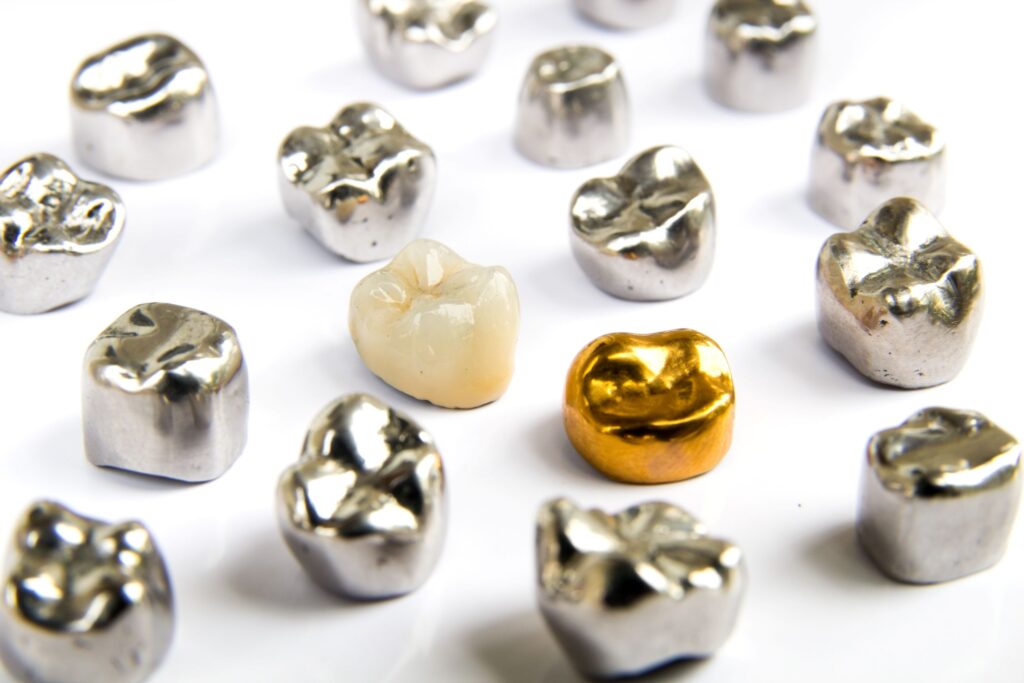Restorative Records: A History of Dental Crowns
October 7, 2024

If you’ve recently undergone a root canal or have a severely damage or decayed tooth, there’s a good chance your dentist will fit you with a dental crown. These prosthetics are tooth-shaped caps made of durable porcelain to restore your tooth’s functionality. Furthermore, it can be customized to match the hue, shape, and size of your natural teeth so no one knows it’s there.
Although dental crowns are a popular and effective solution today, that hasn’t always been the case. Continue reading to learn about the fascinating evolution of these artificial teeth from their archaic origins to today!
Ancient Attempts
Archaeologists have discovered that humans have struggled with their dental health since recorded history began. For example, a Sumerian text dating as far back as 5000 BC discusses dental cay and the belief that it’s caused by ‘tooth worms’.
However, the earliest evidence of dental crowns may be the remains of Etruscan skeletons from around 700 BC. It’s believed that early goldsmiths would replace the front teeth of women in high society with gold bands as a status symbol. These rudimentary versions likely weren’t intended to be functional because the material is so soft and easily damaged. That means it could only be worn by those with enough wealth and status to have soft foods, like bread, prepared for them.
Advancing Into the Middle-Ages
For centuries, little progress was made regarding widespread knowledge of dental procedures. Then, between the 1200s and 1300s, France established a Guild of Barbers that included two groups of people: surgeons, who had medical training, and lay barbers, who took care of hygienic needs, including dental extractions. When The Little Medicinal Book for all Kinds of Infirmities of the Teeth was published in 1530, it included basic procedures like fillings and dental crowns. Then, in 1575, the “Father of Modern Surgery,” Ambrose Pare, wrote his complete works about dentistry that also discussed artificial teeth.
Industrial Updates
Around the time of the industrial revolution between the 1700s and 1800s, there were several advancements in dental technology and techniques. A gentleman named John Backer brought the practice of dentistry to America from England, resulting in an explosion of science and education around the topic.
In the late 1800s, Dr. Charles Land patented a porcelain “jacket” crown, but unfortunately, this was vulnerable to cracks and chips. Then, to create a durable material, metal was fused with porcelain to build prosthetics that could withstand daily wear and tear.
Contemporary Dental Crowns
In 1984, the first synthetic restorations made of ceramics and glass were manufactured, leading to dental crowns as we know them today. Now, they can be designed from porcelain, metal, composite resin, or a combination of materials that can be customized to look just like your natural teeth. They can last 15+ years with the right care, making them a popular and long-lasting repair for damaged teeth.
Thanks to the ever-evolving nature of the field of dentistry, there’s no better time than now to get a dental crown!
About the Author
Dr. Christopher Capehart is passionate about helping people of all ages improve their daily lives by enhancing their dental health. He earned his doctor of dental surgery degree from the University of Texas Health Science Center at San Antonio, where he graduated Magna Cum Laude. Now, he’s a valued member of the American Dental Association and other prestigious organizations, so you can trust that your smile is in good hands. He utilizes state-of-the-art equipment to offer a full range of services conveniently under one roof, including dental crowns. You can request an appointment on the website or call (972) 436-1325.
No Comments
No comments yet.
RSS feed for comments on this post.
Sorry, the comment form is closed at this time.
